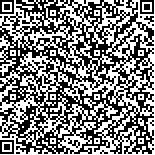面向天基物联的异步免授权SCMA多用户检测方案
2023,31(3):110-118
摘要:天基物联网(Space-Based Internet of things)为全球用户提供了广覆盖、全天候、大容量等物联网服务[1],是未来6G物联网的重要部分。 然而当前天基物联网下的稀疏码多址接入技术(Sparse Code Multiple Access, SCMA)[2]的多用户检测算法面临诸多问题,也存在一些技术挑战。 例如各个用户距离基站及卫星距离较远而产生的时间延迟,异步多用户检测算法的计算复杂度较大且收敛性能较差等等;为了解决以上天基物联场景下多用户检测出现的问题,文中对SCMA多用户检测算法进行了研究;首先设计了免授权[3]信息传输框架,并利用盲检测识别出发送端活跃用户的用户数据;然后采用异步置信传播检测算法(Belief Propagation Message Passing Algorithm, BP-MPA),在存在时间延迟的情况下进行多用户检测;最后利用优化后的压缩感知领域中的自适应子空间追踪算法(Adapted-Subspace Pursuit, A-SP)对多用户检测算法进行优化,通过仿真对天基物联场景的多用户检测算法在工程上的应用进行可行性验证;仿真结果表明在天基物联免授权场景下,所提出的算法能有效提升上行异步SCMA系统的多用户检测算法的误符号率,并且相对于串行BP-MPA算法,大幅提高了算法的收敛速度。
关键词:天基物联网;稀疏码多址接入技术;压缩感知;异步检测;自适应子空间追踪;盲检测;免授权;
Asynchronous Grant-Free SCMA Multiuser Detection Algorithm for Space-Based Internet of Things
Abstract:The space-based Internet of things(IoT) provides global users with wide coverage, all-weather, large capacity, and other services, which is an important part of the future 6G IoT. However, when the multi-user detection algorithm of sparse code multiple access technology based on the IoT faces many problems, there are also some technical challenges such as the time delay caused by the distance between the user and the base station deployed at the satellite, the performance of high computational complexity and poor convergence performance of the asynchronous multiuser detection algorithm, and so on. In order to solve the problem of multiuser detection in the space-based IoT scenario, the SCMA multiuser detection algorithm is studied in this paper. First of all, a grant-free information transmission framework is designed, and blind detection is used to recognize the user data of active users at the transmitter, and then the asynchronous belief propagation message passing algorithm is used for multiuser detection in the presence of time delay. Finally, the adapted-subspace pursuit algorithm in the field of compressed sensing is used to optimize the multiuser detection algorithm and feasibility verification of engineering application of the multiuser detection algorithm in space-based IoT scenarios by simulation. Simulation results show that the proposed algorithm can effectively improve the symbol error rate of the multiuser detection algorithm for uplink asynchronous SCMA systems, and greatly improve the convergence speed compared with the serial BP-MPA algorithm.
Key words:Space-Based IoT; Sparse Code Multiple Access(SCMA); Compressed sensing; Asynchronous detection; Adaptive subspace tracking; Blind detection; Grant-free;
收稿日期:2023-01-07
基金项目:国家重点研发计划,国家重点基础研究发展计划(973计划)
